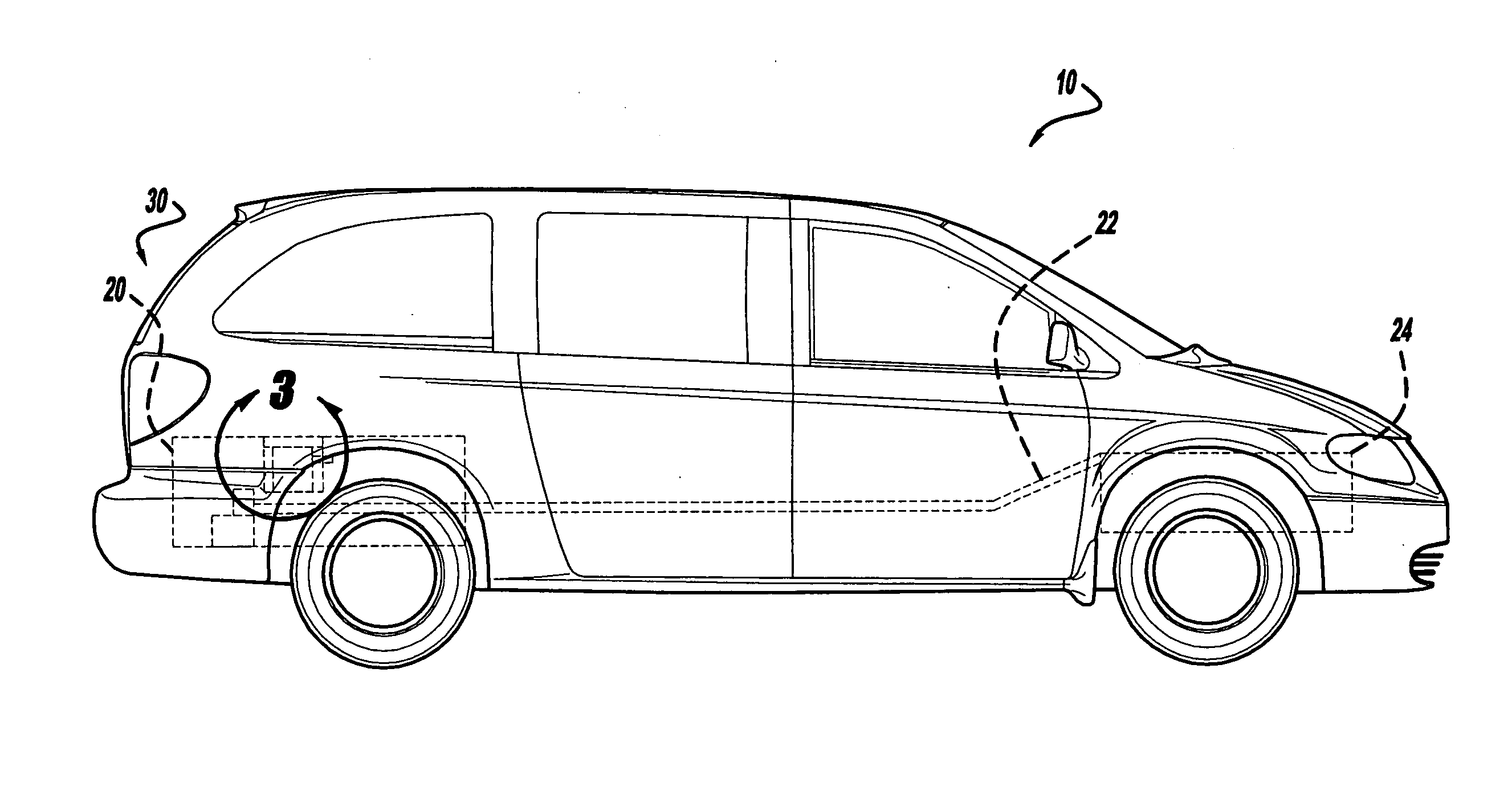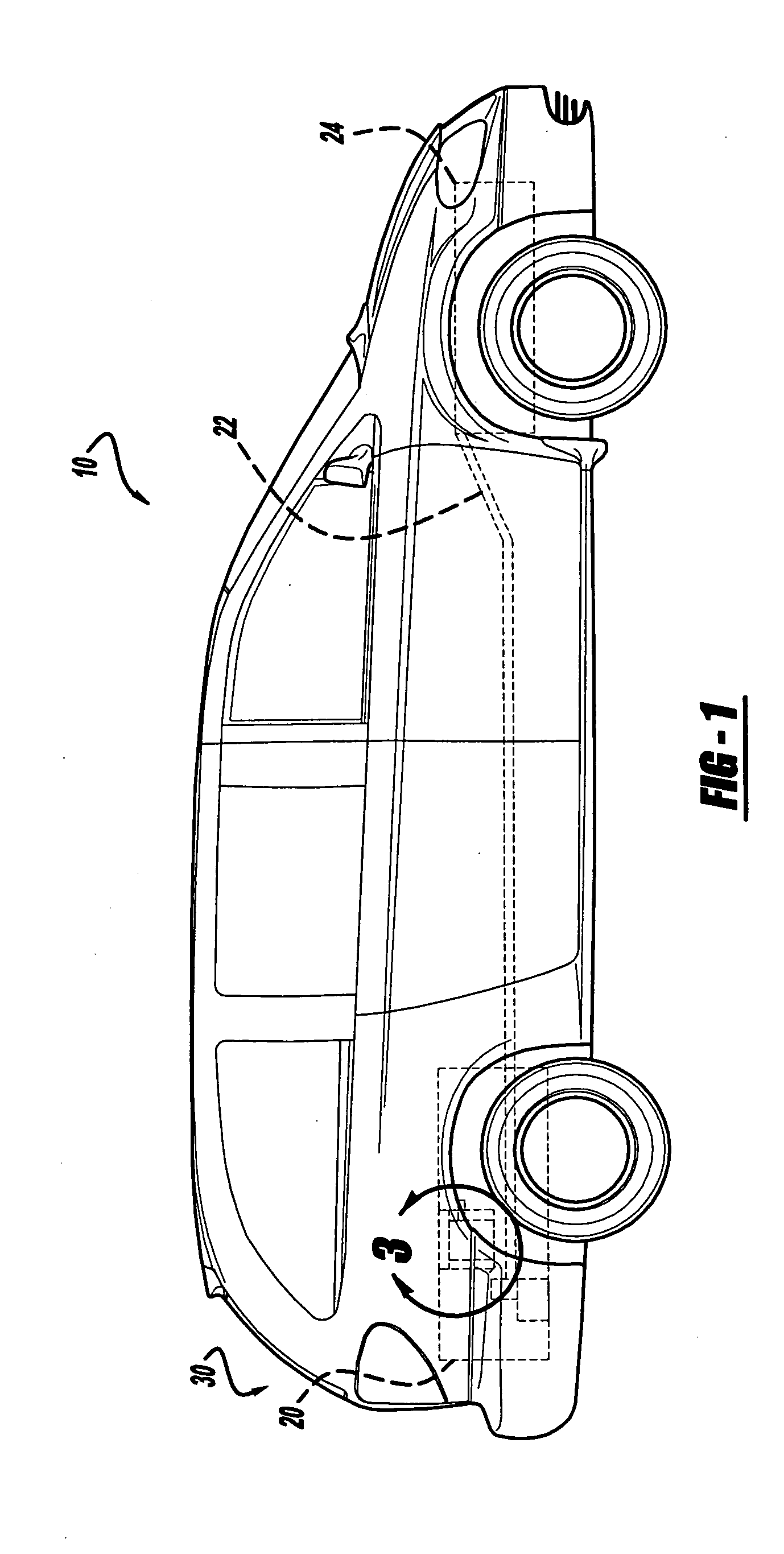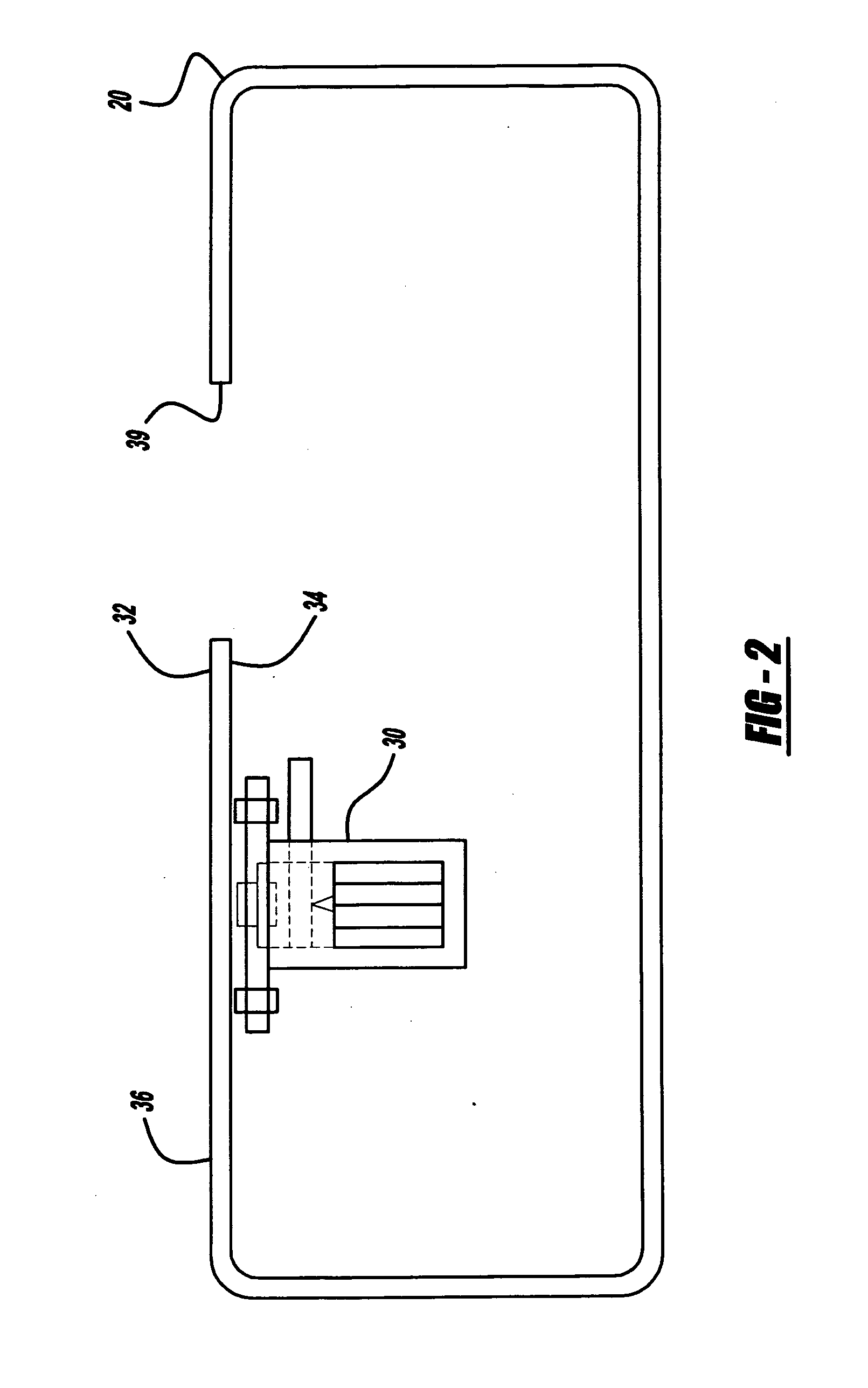Method of welding a component inside a hollow vessel
a hollow vessel and component technology, applied in the field of welding, can solve the problems of increasing the total number of parts and the overall cost of the fuel tank assembly, and not being able to meet the requirements of the fuel tank
- Summary
- Abstract
- Description
- Claims
- Application Information
AI Technical Summary
Benefits of technology
Problems solved by technology
Method used
Image
Examples
Embodiment Construction
[0018] The following description of the preferred embodiments is merely exemplary in nature and is in no way intended to limit the invention, its application, or uses. With reference to FIGS. 1 through 8, a method of welding a component inside a hollow vessel via induction heating in accordance with the teachings of the present invention will be described. The welding method of the teachings of the present invention is primarily for welding plastic components together. For example, for welding a first plastic component to a second plastic component. Normally the type or kind of plastic of the two components is the same in order to facilitate consistent bonding of the parts. However, the type of plastic does not necessarily have to be the same, but rather only compatible in order to provide a proper weld. Compatibility of the two plastics will also depend upon the bond material, that is, the induction weld plastic material that will be used to join the parts together. As long as the ...
PUM
| Property | Measurement | Unit |
|---|---|---|
| temperature | aaaaa | aaaaa |
| time | aaaaa | aaaaa |
| induction weldable | aaaaa | aaaaa |
Abstract
Description
Claims
Application Information
 Login to View More
Login to View More - R&D
- Intellectual Property
- Life Sciences
- Materials
- Tech Scout
- Unparalleled Data Quality
- Higher Quality Content
- 60% Fewer Hallucinations
Browse by: Latest US Patents, China's latest patents, Technical Efficacy Thesaurus, Application Domain, Technology Topic, Popular Technical Reports.
© 2025 PatSnap. All rights reserved.Legal|Privacy policy|Modern Slavery Act Transparency Statement|Sitemap|About US| Contact US: help@patsnap.com



